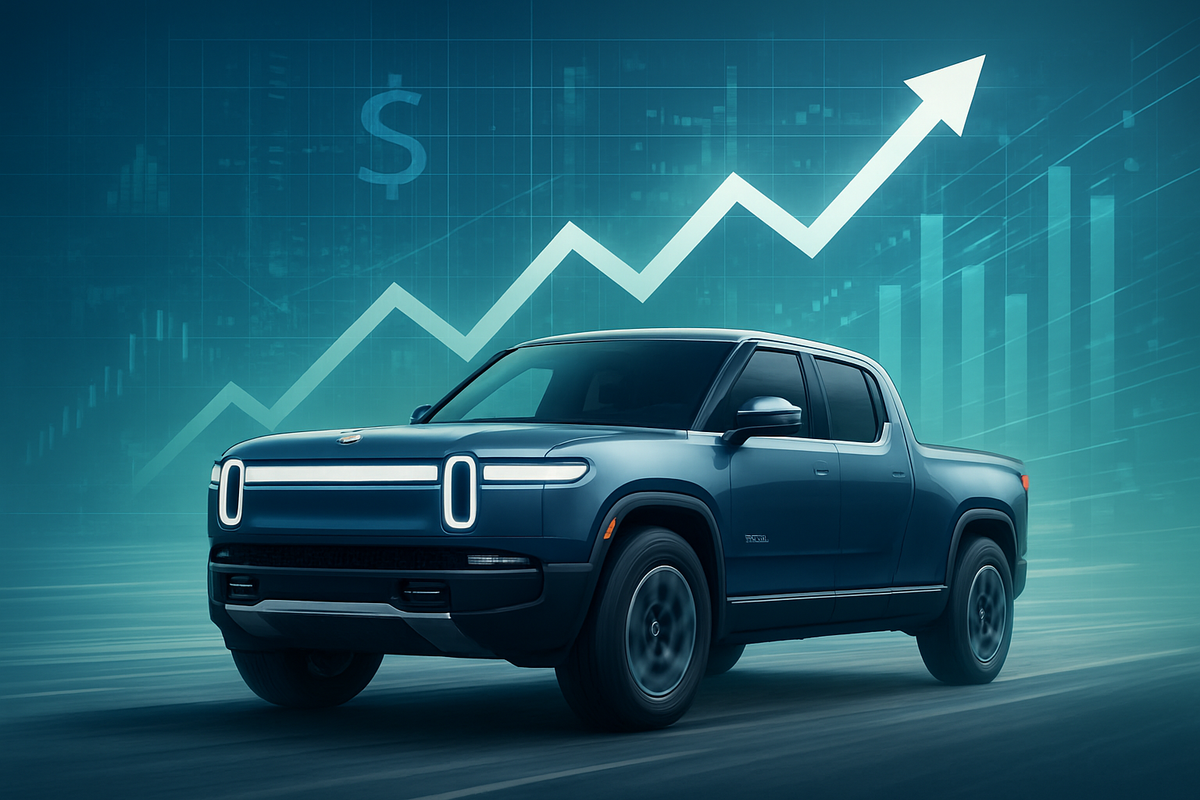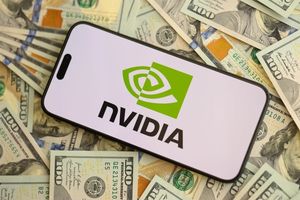
Rivian Automotive (NASDAQ: RIVN) has captured the financial world's attention with a dramatic stock surge in mid-November 2025. This significant rally, which saw shares climb over 20% in a single day and reach a new 52-week high, is largely attributed to a confluence of robust third-quarter financial results, an optimistic future outlook, and crucially, the announcement of an ambitious, performance-based compensation package for CEO RJ Scaringe. The market's enthusiastic reaction underscores a growing belief that aligning executive incentives with long-term shareholder value can be a powerful catalyst for growth, even in the highly competitive electric vehicle (EV) sector.
The news has ignited discussions across the market, highlighting the perceived impact of executive compensation on company valuation and investor confidence. As Rivian navigates the challenging landscape of EV production and profitability, this multi-billion-dollar incentive plan for its founder-CEO is being closely watched as a potential blueprint for success, drawing direct comparisons to Tesla's (NASDAQ: TSLA) highly successful executive compensation model for Elon Musk.
The Catalyst: Performance and a Powerful Incentive
Rivian's recent stock surge, peaking around November 10-11, 2025, was propelled by a series of positive developments. The company reported a stellar third quarter for 2025, achieving a 78% year-over-year revenue increase to $1.56 billion, comfortably exceeding analyst expectations. For the first time, Rivian also posted a consolidated gross profit of $24 million, a significant milestone for the burgeoning EV manufacturer. Furthermore, the company surpassed its delivery guidance, handing over 13,201 vehicles in Q3 2025. Investor confidence was further bolstered by an optimistic outlook and updates regarding the highly anticipated, lower-cost R2 SUV, slated for launch in the first half of 2026. A strategic spin-off of its industrial AI unit, Mind Robotics, which secured $110 million in external seed funding, also contributed to the positive sentiment.
However, the most compelling driver, and the one sparking intense market debate, was the revised compensation package for CEO RJ Scaringe. Announced between November 8-10, 2025, following an SEC filing, the plan offers Scaringe the potential to earn up to $4.6 billion over a ten-year period if all ambitious targets are met. This includes options to purchase 36.5 million shares of Rivian Class A stock at an exercise price of $15.22 per share (the closing price on November 6). The vesting of these options is strictly tied to several performance milestones, including challenging stock price targets ranging from $40 to $140 per share, alongside new operating income and cash flow targets extending through 2032. Scaringe's annual base salary was also doubled from $1 million to $2 million, and he received a 10% economic interest in the newly spun-out Mind Robotics. This new package replaces a prior 2021 plan whose stock price targets ($110-$295) were deemed unattainable by the board. The plan was developed in consultation with an independent compensation adviser, aiming to ensure strong alignment with shareholder returns. Initial market reactions were overwhelmingly positive, with Rivian shares rising over 1% in premarket trading on November 10 and surging as much as 9% intraday on November 11. Analysts, such as Barclays' Dan Levy, characterized the package as a "positive development," while retail traders expressed optimism, viewing the performance-linked incentives as a strong signal for Rivian's future competitiveness against industry giants like Tesla.
Winners and Losers in the Executive Compensation Game
The most immediate and obvious potential "winner" from this executive compensation structure is Rivian Automotive (NASDAQ: RIVN) itself, provided the ambitious targets are met. The company projects that if all performance milestones are fully achieved, shareholders could realize up to $153 billion in incremental value. The plan is strategically designed to retain RJ Scaringe, a visionary founder-CEO, and to intensely focus his efforts on driving significant growth, operational efficiency, and, crucially, sustained profitability. This alignment of interests between the CEO and shareholders is viewed as a powerful mechanism to steer Rivian through the capital-intensive and highly competitive EV market, especially as it prepares for the pivotal launch of the R2 SUV.
For competitors in the EV space, such as Tesla (NASDAQ: TSLA) and Lucid Group (NASDAQ: LCID), Rivian's move could represent a new benchmark in executive compensation strategies. While Tesla has famously pioneered such performance-based packages, Rivian's adoption and the market's positive reaction might put pressure on other EV manufacturers to re-evaluate their own executive incentive structures to ensure they are equally motivating and aligned with shareholder value creation. This could lead to a broader trend of more aggressive, performance-linked pay packages across the industry, potentially intensifying the race for talent and market share. Suppliers and partners of Rivian might also indirectly benefit from the company's potential growth and increased production volumes if the CEO's incentives translate into greater operational success and expansion.
Broader Implications and Historical Parallels
Rivian's new CEO pay package is more than just an internal corporate decision; it's a significant indicator of broader industry trends in executive compensation, particularly within the high-growth, capital-intensive technology and automotive sectors. The explicit modeling after Tesla's compensation plan for Elon Musk highlights a growing acceptance, and even preference, for ultra-long-term, performance-based awards that tie executive wealth directly to massive shareholder value creation. This approach signals a shift from traditional compensation models that might include more fixed salaries or less ambitious equity grants, moving towards structures that demand transformative growth and profitability.
The ripple effects could extend across the EV industry and beyond. Other emerging EV players, and even established automakers transitioning to electric, might consider similar incentive structures to attract and retain top talent capable of navigating the complex transition. This could intensify competition for visionary leaders and potentially drive up the overall cost of executive talent if such large-scale, performance-linked packages become the norm. From a regulatory standpoint, while the market has reacted positively, the sheer scale of the potential $4.6 billion payout could attract scrutiny from investor advocacy groups or even regulatory bodies, especially if Rivian's performance falters or if the targets are perceived as overly optimistic without sufficient shareholder returns. Historically, large executive payouts have sometimes faced backlash, particularly when not clearly tied to tangible, long-term value creation. However, the explicit link to ambitious stock price and operational targets in Rivian's plan aims to mitigate such concerns by demonstrating a clear path to shareholder benefit. The Tesla precedent, where Elon Musk's compensation plan generated immense wealth for shareholders, serves as a powerful historical comparison, lending credibility to Rivian's similar strategy.
The Road Ahead: Opportunities and Challenges
Looking ahead, the Rivian CEO pay package introduces both short-term and long-term possibilities. In the short term, investor focus will remain sharply on Rivian's operational execution, particularly the ramp-up of production and the successful launch of the R2 SUV in early 2026. Quarterly financial results and delivery figures will be scrutinized for signs of progress towards the ambitious targets set within the compensation plan. The market will be watching to see if the heightened incentive truly translates into accelerated innovation, cost efficiencies, and market penetration.
Long-term, the plan necessitates strategic pivots and adaptations. Rivian must demonstrate a consistent ability to scale production, manage supply chains effectively, and achieve sustained profitability. The aggressive stock price targets, particularly the $140 per share hurdle (an 820% premium over the exercise price), present a formidable challenge within the volatile electric vehicle industry. This requires not only strong product development but also robust market demand and effective competition against established players like Tesla and traditional automotive giants. Market opportunities may emerge from Rivian's potential to attract top talent, invigorated by the prospect of working under a highly incentivized leadership. Challenges will include maintaining investor confidence amidst inevitable market fluctuations, managing high expectations, and navigating potential economic downturns or shifts in consumer preference. Potential scenarios range from Scaringe fully achieving the payout, signifying massive success for Rivian and its shareholders, to falling short, which could lead to investor disappointment and a re-evaluation of the compensation strategy.
A High-Stakes Bet on Future Value
Rivian's stock surge, driven significantly by its CEO's new $4.6 billion performance-based pay package, represents a high-stakes bet on the company's future value and the transformative power of executive incentives. The key takeaway is the market's positive reception to a compensation structure that directly aligns the CEO's personal wealth with aggressive, long-term shareholder value creation, drawing a clear parallel to Tesla's successful model. This move signals a strong commitment from Rivian's board to retain its founder-CEO, RJ Scaringe, and to motivate him to achieve ambitious growth, operational efficiency, and, crucially, sustained profitability in the highly competitive EV landscape.
Moving forward, the market will assess Rivian's ability to execute on its promises. While optimism is currently high, the success of this strategy hinges entirely on Rivian's operational performance, particularly the successful launch of the R2 SUV and its progress towards the challenging financial and stock price targets. Investors should closely watch Rivian's quarterly earnings reports, production figures, and any updates regarding the R2's development and market reception in the coming months. The outcome of this ambitious compensation plan will not only define Rivian's trajectory but could also serve as a significant case study for executive compensation strategies across the entire technology and automotive industries, underscoring the enduring debate about how best to incentivize leaders to create lasting shareholder value.
This content is intended for informational purposes only and is not financial advice





